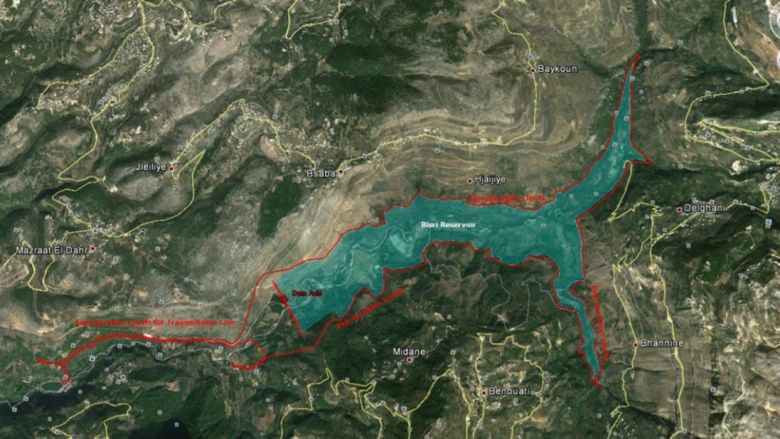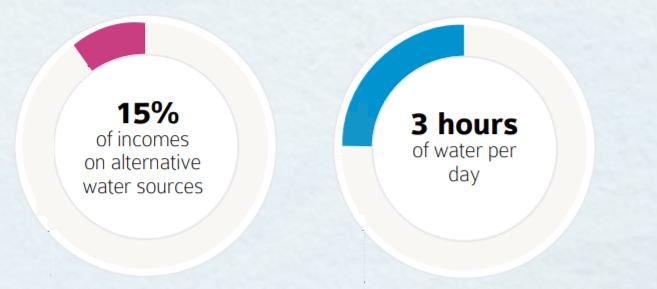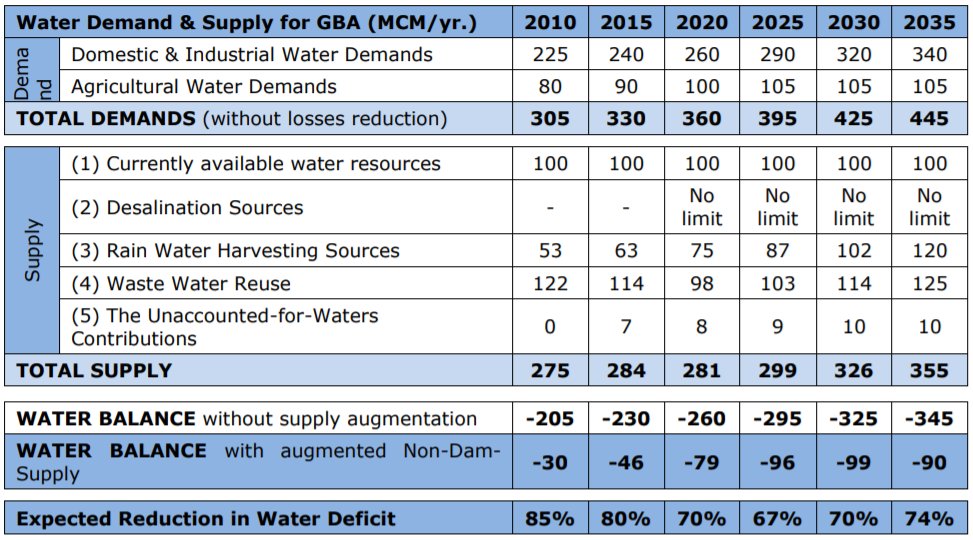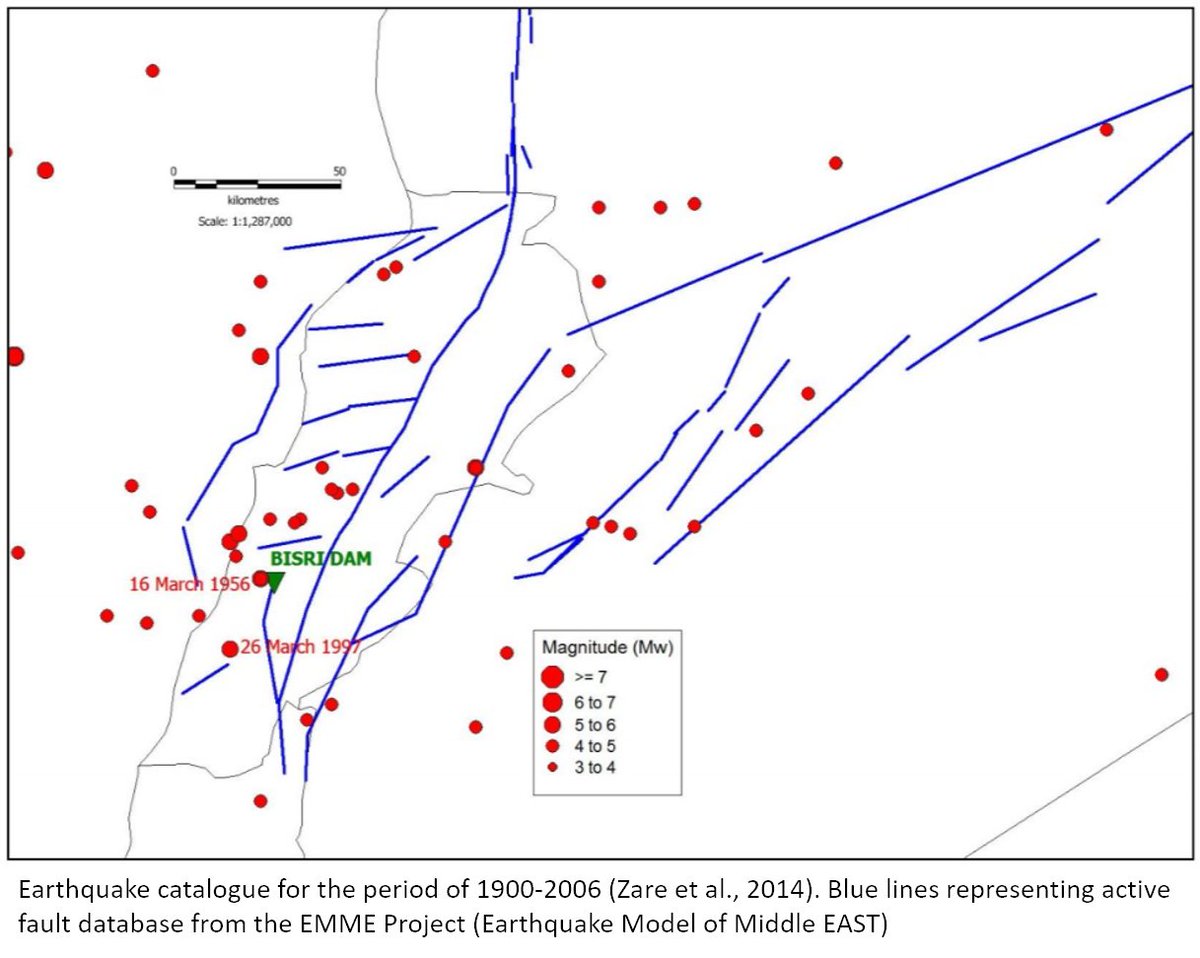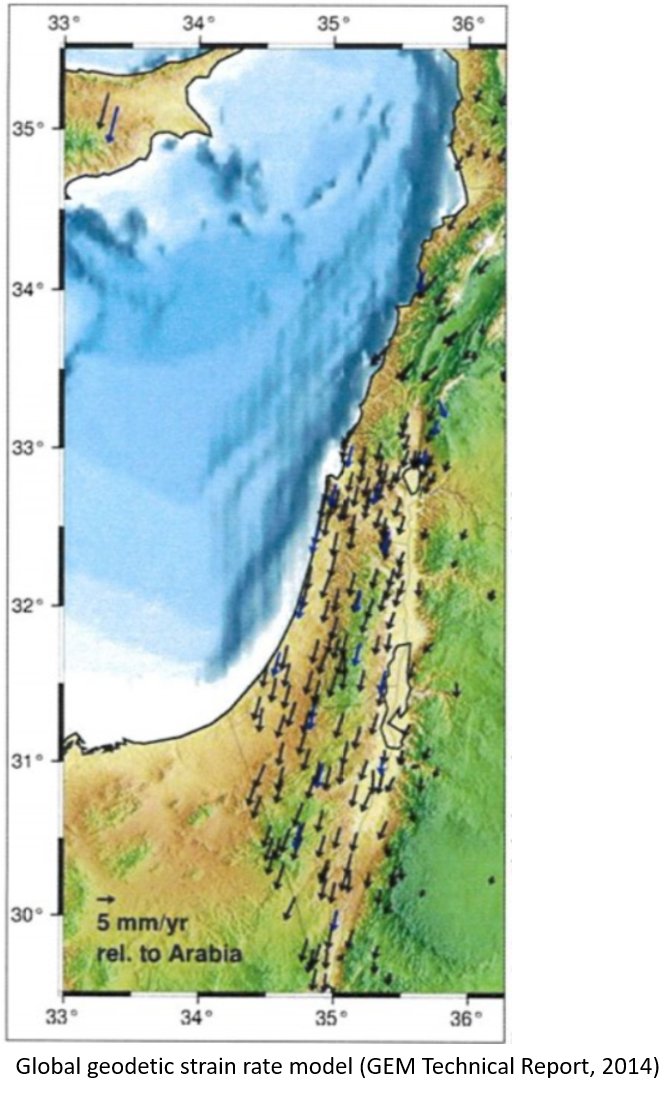This Project will provide water for 1.6 million people living across the Greater Beirut and Mount Lebanon including 460,000 living with less than $4/day. Currently, households spend up to 15% of their incomes on alternative water sources (tankers, bottled water, private wells).
An analysis of alternatives examined the technical, socio-economic and environmental aspects of:
- 4 other dam locations
- Non-dam options (groundwater resources, desalination, demand management and treated wastewater reuse)
- 4 other dam locations
- Non-dam options (groundwater resources, desalination, demand management and treated wastewater reuse)
It concluded that no single source of water is sufficient to meet the water deficit of 345million m³ in Greater Beirut Mount Lebanon by 2035. The construction of Bisri Dam is part of a series of investments and reforms combining non-dam and dam actions to provide water security.
Dam Safety:
An independent international Dam Safety Panel composed of internationally recognized experts (Prof. Kaare Höeg from Norway, Prof. Mustafa Erdik from Turkey, Prof. Paul Marinos from Greece and Prof. Wajdi Najem from Lebanon) reviewed the technical dam safety studies
An independent international Dam Safety Panel composed of internationally recognized experts (Prof. Kaare Höeg from Norway, Prof. Mustafa Erdik from Turkey, Prof. Paul Marinos from Greece and Prof. Wajdi Najem from Lebanon) reviewed the technical dam safety studies
The Bisri Dam is designed to withstand ground motion resulting from a Maximum Credible Earthquake (MCE) event on the Roum Fault, which is a Mw7 strike-slip earthquake (considering historical seismic event data including the earthquakes caused by the Roum Fault in 1837 and 1956)
Numerical dynamic analyses and confirmation of the safety against an Operation Basis Earthquake and Safety Evaluation Earthquake according to the seismic design guidelines of the International Commission on Large Dams (ICOLD) were done.
Roum fault horizontal slip rate is approx. 1mm/year (also evidenced by the identical and parallel slip velocity vectors - see below Figure). Assuming that M5.7 and M7 earthquakes produced 10 and 100cm lateral offset at the source, the return period will be 100 and 1000 years.
Reservoir-Triggered Earthquakes occurred on dams with heights over 100m (Bisri Dam being 70m high) and occurred on reservoir capacity >1 billion m³ (approx. 8 times larger than that of Bisri Dam being 0.125 billion m³). Worldwide, the max RTE magnitude was 6.3 (Koyna dam, India)

 Read on Twitter
Read on Twitter